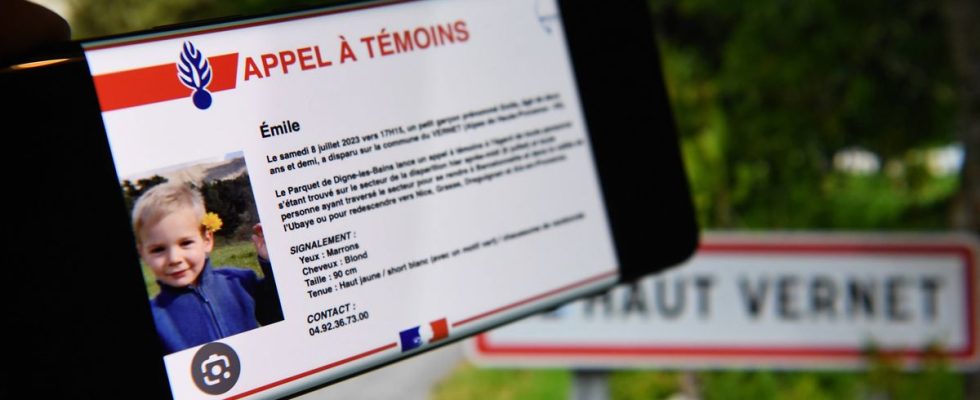“A final search operation” to try to find little Emile, who disappeared last Saturday at Vernet (Alpes-de-Haute-Provence), is being carried out this Thursday morning. This company, led by around fifty mobile gendarmes from Gap, concretely targets “the 1.8 km of road between the hamlet of Haut-Vernet and the village of Vernet, as well as a strip of about 10 m on each side of this way”, specified the public prosecutor of Digne-les-Bains, Rémy Avon. A “security” operation, specified the magistrate, because the area has already been inspected.
On Wednesday, the prosecutor announced that the investigation opened for “search for the causes of worrying disappearance” was entering a second phase, that of the exploitation and analysis of the data after an intense period of research. “If other searches are carried out later, it will be to verify or corroborate elements collected during the investigation,” he said.
A national investigation unit
The investigation unit will now become a “national” investigation unit. A system which makes it possible to strengthen resources and staff. If, until now, about fifteen investigators worked on this more than worrying disappearance, they will now be about twenty on the file. The “national” unit will also provide expanded scientific and technical resources, as well as regional and national resources.
The investigators are supported in particular by the IRCGN, the Criminal Research Institute of the National Gendarmerie, in Pontoise. This unit of 600 soldiers intervenes “to carry out findings and expertise of a certain complexity”, specifies the site of the Ministry of the Interior. They are, for example, the ones who sifted through the car of Nordahl Lelandais and discovered a trace of blood belonging to the little Maëlys while the latter denied for many weeks to be linked to his disappearance.
Analysis of collected data
Because now it is necessary to analyze “the considerable mass of information and elements collected over the past four days”, in the words of the prosecutor. In parallel with the sweeps, the 30 buildings making up the tiny hamlet were searched, 12 vehicles visited, the 25 inhabitants of the town and the boy’s family heard. It is now necessary to carefully check the timetables, analyze all the telephone data around the hamlet at the time of Emile’s disappearance.
The IRCGN has already been called upon in this case: it notably had to analyze a stain observed on Tuesday on the bodywork of a vehicle “which one could think of being blood”, according to the prosecutor. It “turned out that it is not human blood but animal blood”, developed the magistrate.
1,200 calls were also received. If some are wacky others, on the other hand, need to be checked. For now, the mystery remains. The two-and-a-half-year-old boy was last seen on Saturday around 5.15 p.m., alone, in a downhill street in the hamlet of Haut-Vernet, where he had just arrived for the summer holidays in the house of His grand-parents. Was the child lost? Has he been taken away? Victim of an accident or homicide? “All the hypotheses remain valid, none is privileged and none is excluded”, insisted Rémy Avon again.

